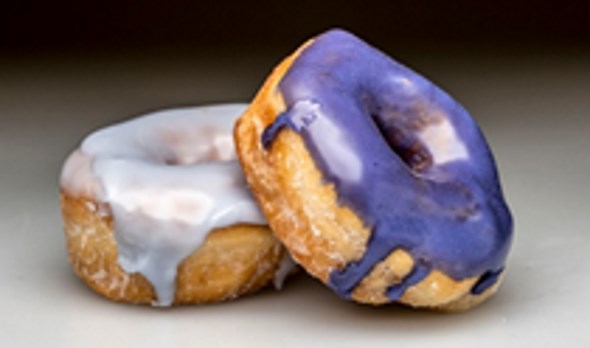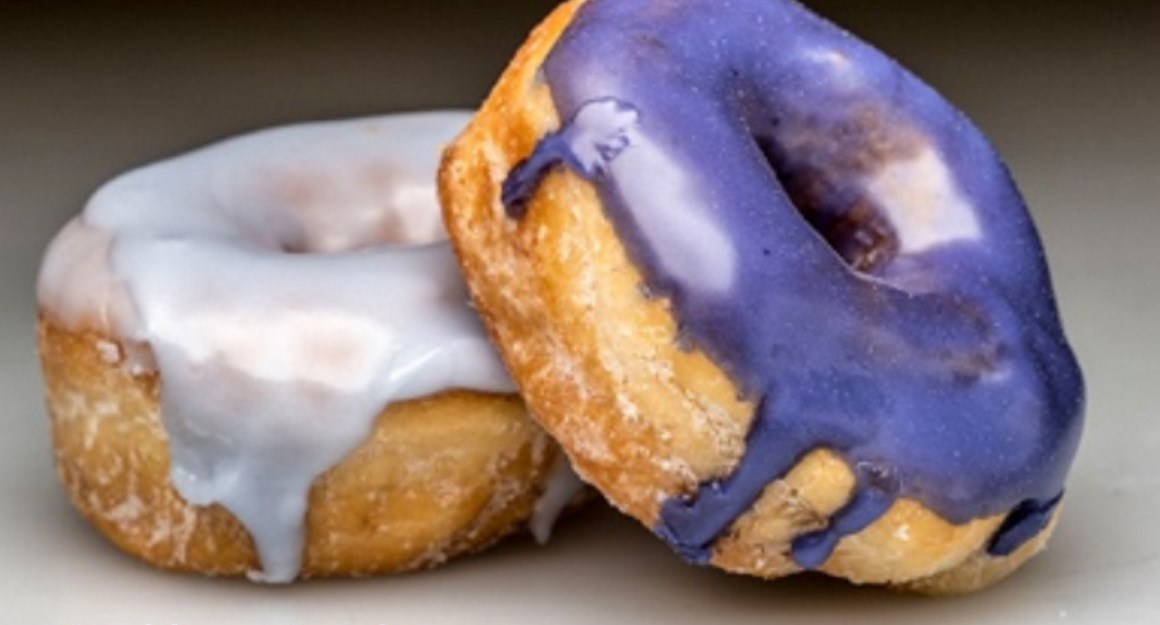By Kai Kupferschmidt [1,2]
The favorite color of most people, however hardly common among animals and plants. It is very difficult to produce artificially. Consequently, scientists are eagerly working on creating new blue pigments.
Part 3: Too much Green
The food industry is desperate. How can they be successful finding natural blue ingredients, which are long lasting and resistant to heat as well as light?
A decade ago, Cathie Martin, scientist John-Innes-Center, created a genetic engineered tomato, which produces anthocyanin. This fruit possesses healthy antioxidants and its pigments dye vegetables in a darkish violet blue. Martin therefore had the idea to color other foods blue as well.
A natural blue is not very common among food. In former times, a synthetic ultramarine was used to change the yellowish color of sugarcane into a bright white. Blue food colorings are used for sweets, icings and beverages. They are also used for mixing other colors. “We need blue to produce all colors of the spectrum,” says Richard van Breemen, a chemist at Oregon State University who works with natural products.
The selection is limited at the moment. There are two synthetic food colors approved in the U.S.: brilliant blue also known as Blue No. 1 made out of char tar and Blue No 2, which is gained, from a synthetic indigo blue. Another synthetic blue is available in the EU, called patent blue V. It gives the Curacao Liqueur its blue color, for example.
The consumer, however, prefers natural ingredients. Companies like Mars and Pepsi have been trying to substitute synthetic colors with little success, though. “One of the big disappointments with the color blue is that it is very, very difficult to combine natural colors with compounds that can be used to color food," says Martin. The only natural blue colorant is a raw extract of spirulina algae, which was approved by the U.S. Food and Drug Administration in 2014 for use in confectionery and other foods. However, it is not very stable and blue. “It’s a terrible blue”, she says, “actually it’s green”. And the color might change or even disappear when food is baked, cooked or exposed to light on supermarket shelves.
Van Breemen therefore had been looking for better candidates in the world of microbes. He assumed to find a more stable blue in an extreme environment such as the hot springs in Yellowstone Park or in the ocean. But he could not find any suitable blue pigments. Many substances turned out to be chemical weapons of the microbes. Many substances turned out to be chemical weapons of the microbes. They rather should be used as antibiotics than food colorings.
Plants may be the better choice, especially as they offer a wide range of active ingredients to choose from. Although forming pigments on the basis of delphinine most blue blossoms vary the molecule adding various chemical groups. Cathie Martin hopes to find a stable food coloring in the blue clitoris, a butterfly flower. The beautiful blue flowers give the Malaysian rice dish Nasi Kerabu its colour.
Martin first bought clitoral flowers online at Amazon, but soon stocks ran out. Recently she received three bulging bags of flowers from Saudi Arabia. A scientist who had visited her laboratory had collected these in the wild. A mixture of anthocyanin from the blue clitoris has already proven successful for some food applications, says Martin. Researchers in her lab have used it to make bluish icing for cupcakes and donuts as well as blue ice cream.
But these pigments are also volatile. "Most blue anthocyanin have a half-life of about 24 hours. And we are talking about something that lasts at least three months," says Martin. So their search continues.

A bluish doughnut frosting developed in Cathie Martin's lab contains a mix of anthocyanins found in butterfly pea flowers.
References:
[1] Das Blaue Wunder, German Newspaper Süddeutsche Zeitung, Weekend Edition, Knowledge Chapter, July 6. / 7, 2019
[2] In Search of Blue, By Kai Kupferschmidt, Science Magazine published by AAAS, May 2nd 2019, https://www.aaas.org/
[3] Blau - Reise durch faszinierende Farbe, Kai Kupferschmidt
https://www.amazon.de/Blau-Reise-durch-faszinierende-Farbe/dp/3455006396
